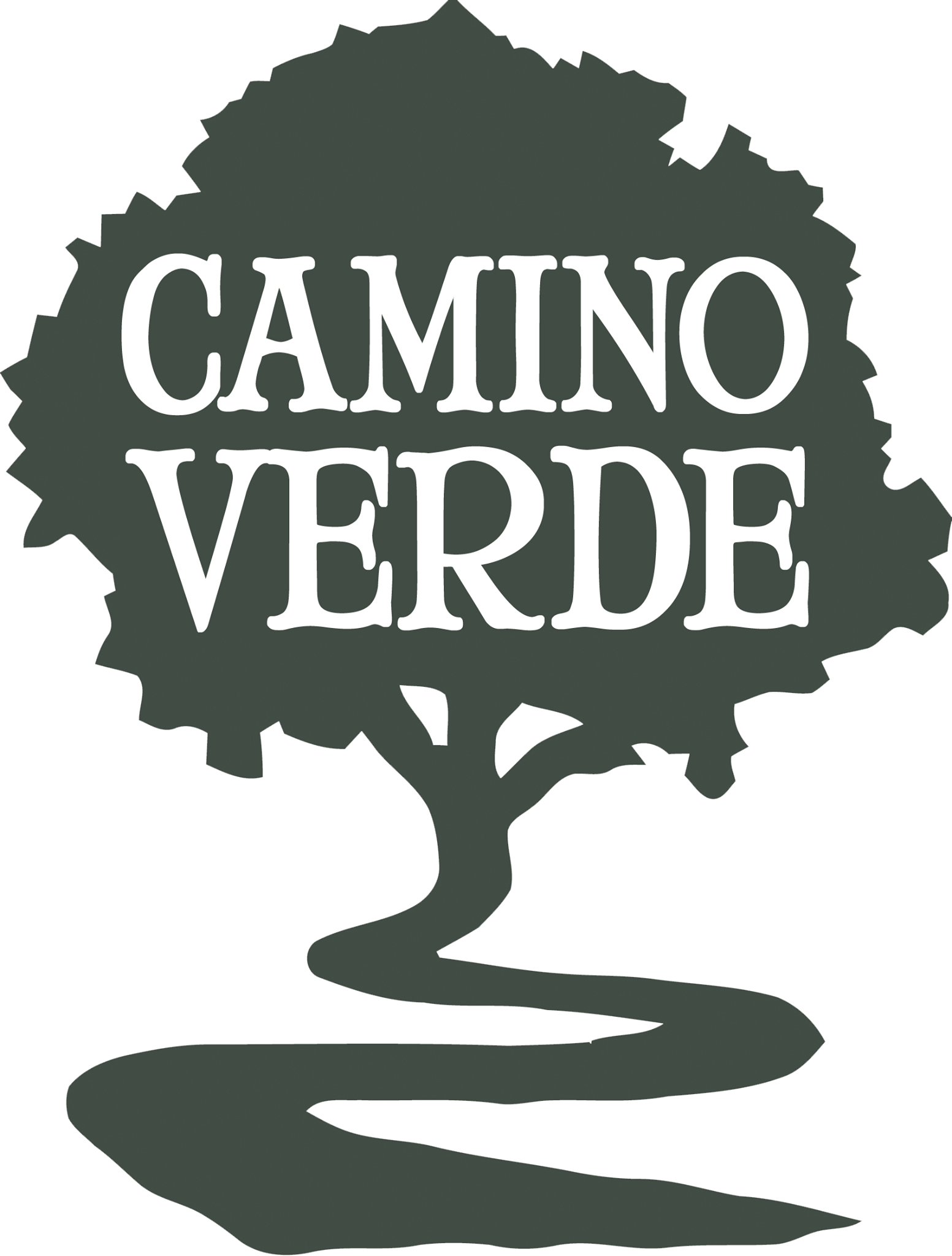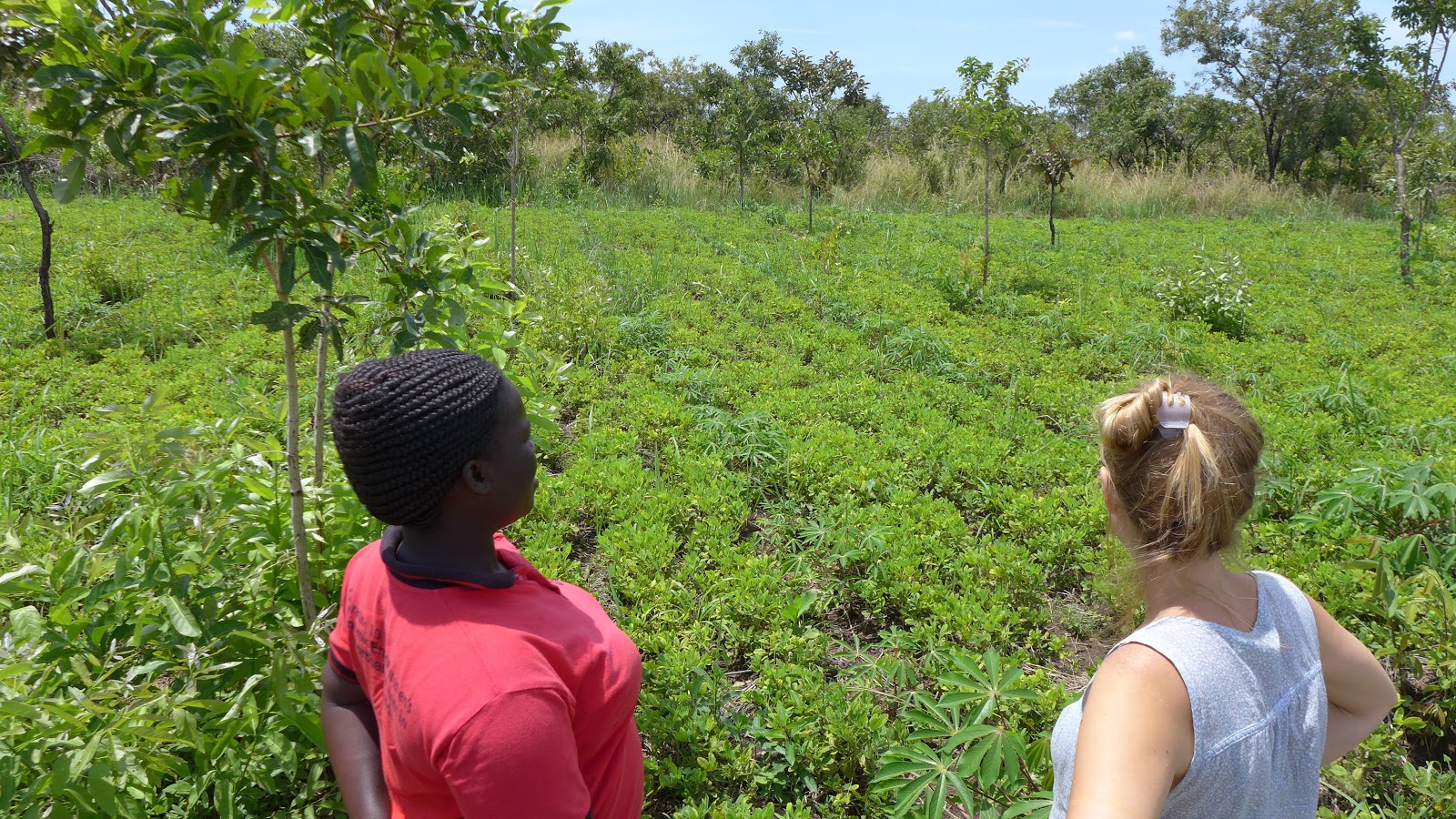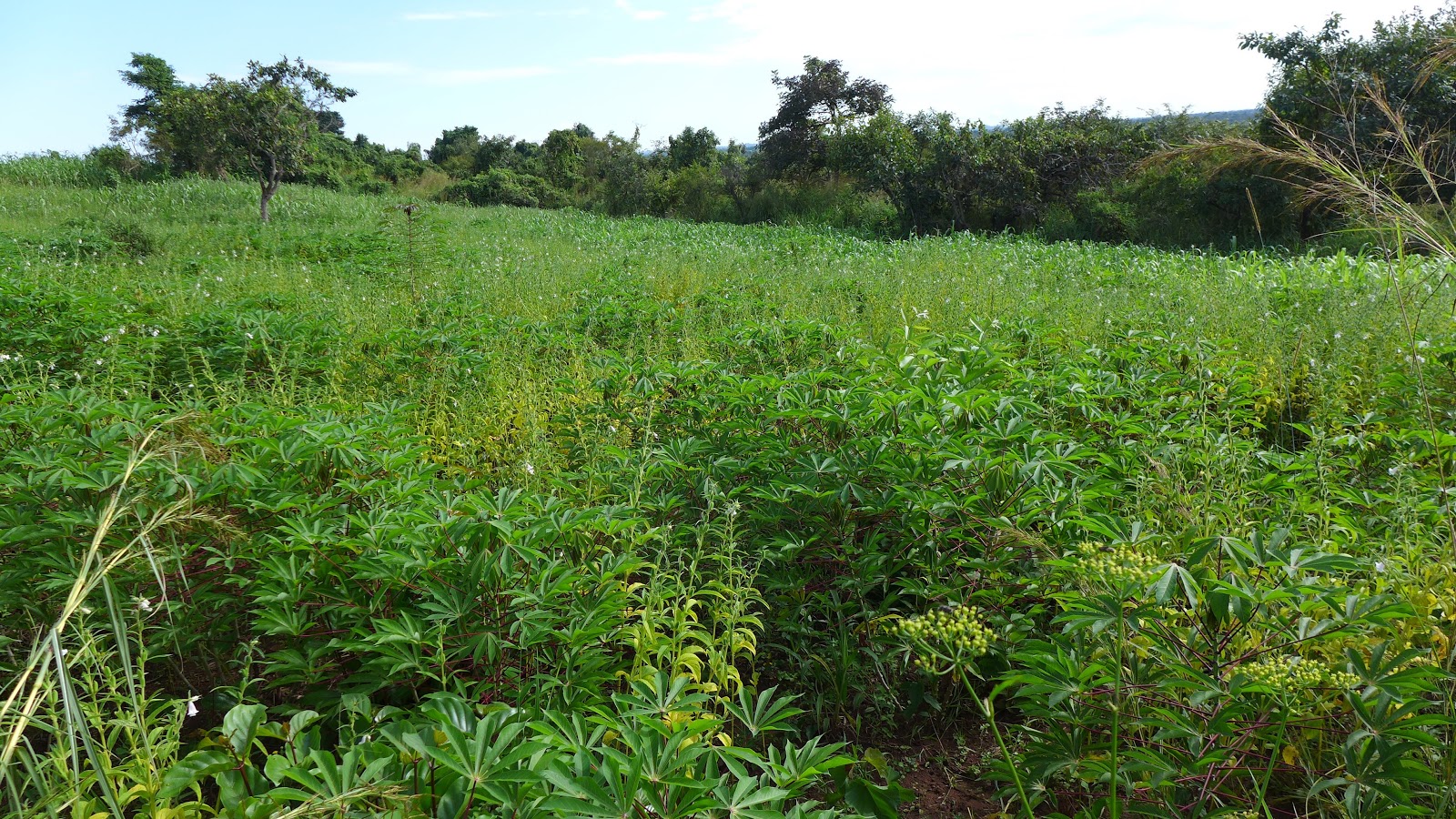A Space for Every Seed – the Power of Polycultures
Natural regeneration of native trees provides a humid microclimate for a banana and cacao polyculture in Northern Uganda.
In the Western world, when we think of a farm the image that comes to mind is usually a monoculture. Maybe it’s corn or maybe it’s wheat, the word monoculture refers to a single species planted from fence to fence. Though the norm in modern farming, monocultures are known to be problematic for several easy-to-understand reasons. Principal among these is that nature abhors an oversaturation of any one organism and tends to use pathogens and pests as checks and balances when any species takes up more than its share of the field.
The consequences of this ecological law are well known to anyone familiar with conventional agriculture as it has been practiced for the last hundred years in countries like the United States. Monocultures require increasing inputs of chemical fertilizers and pesticides to be viable; they make sense in relation to industrial farming implements, distant markets, and economies of scale (all human economic factors). But they fail to function in ecological terms: single crop systems can't claim to remotely approach the longevity and natural resilience of more diverse planting arrays and provide none of the associated ecosystem services.
The intuitive inverse of the monoculture is the diversity we find in the natural world. The impressive productivity of natural ecosystems relies on many different species, never just one. If one tree suffers under a specialized pest, another species stands by to make sure the forest is not lost. This kind of whole systems principle can be described as the resilience of the polyculture.
Overlooking a polyculture of peanuts, cassava, and natural regeneration of native trees.
Polycultures – cropping systems involving more than one species – are as old as agriculture. It may come as a surprise to note that around the globe and since earliest prehistory, polycultures have always been the norm and not the exception. With this perspective the monoculture appears for what it actually is: a recent innovation quite accurately understood as an aberration.
Like much of Sub-Saharan Africa, Northern Uganda is home to an impressive variety of polycultural cropping systems. Pigeon pea carpeted with sweet potato, sorghum with cowpea, bananas over mung beans, millet and peanuts – the list of synergistic combinations is almost endless. Many systems include a nitrogen-fixing plant to enhance overall farm fertility. All take advantage of juxtapositions in plant size and shape to create shelter effects, develop beneficial microclimates, and confuse specialized pests.
It's common sense that this form of agriculture is highly effective at addressing human subsistence needs. Real food security involves not just quantity, but diversity and quality of food available. Polycultures build in diversity by definition, and also provide nutritional and economic resilience – if one crop fails, another remains.
Polycultures are good for the market crop farmer. Here we see millet, pigeon pea, and beans, which may have all come from a single field.
Some polyculture systems contain a healthy dose of something else we don’t immediately associate with crops – trees. These agroforestry systems bring the three-dimensionality of polycultures to their natural expression and remind us how productive a cultivated area can be when allowed to rise out of the horizontal plane. Loosely defined as agriculture with an emphasis on trees, agroforestry almost invariably refers to polycultures.
As Uganda’s and the world’s agriculture becomes increasingly mechanized and reliant on external inputs, traditional crop varieties are being lost along with the knowledge of management associated with the old seeds. Statistically speaking, the loss of what is called agri-biodiversity around the world is more striking even than the loss of natural biodiversity (1).
Thankfully, many farmers, thinkers, and policy-makers are coming full circle to embrace the importance of traditional strategies once more. Camino Verde Consultations works with Wild Forests and Fauna on the Native Seeds Project, a collaboration with local organizations in Northern Uganda to ensure that native trees, medicinal plants, and ancient food crops are available for future generations. Native Seeds is about planting the right things, and it’s about planting them in the right ways. And for these multifunctional interventions that bridge human livelihood needs and forest landscape restoration, monocultures need not apply.
––
(1) Nabhan, Gary Paul. Where Our Food Comes From. Washington, DC: Island Press, 2008.
A cowpea and maize alley crop polyculture.
Cassava and sesame polyculture.
Sesame, maize, and sorghum with natural regeneration of native trees and Borassus palms.






